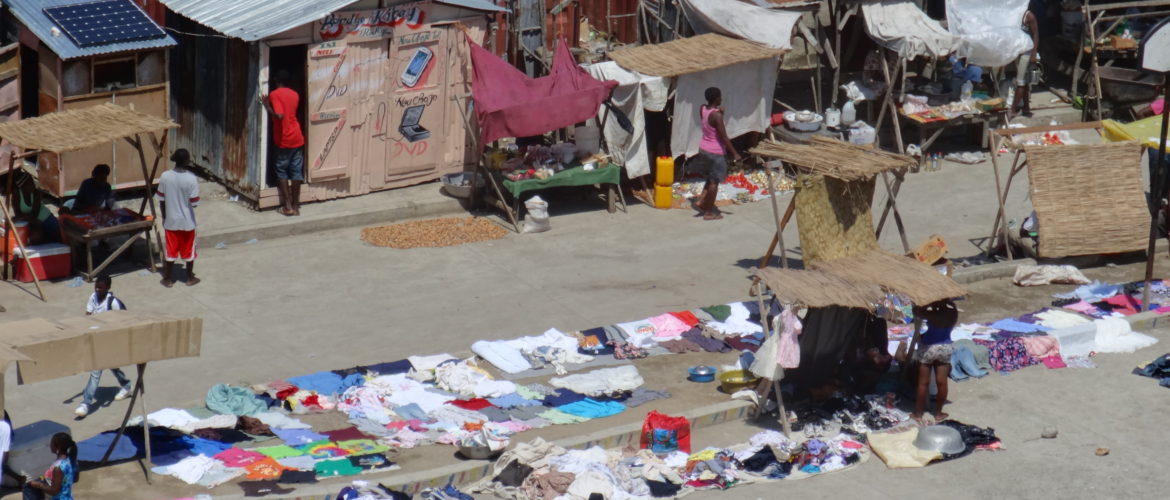Non! Tout rad nou yo dezyèm men.
[No! All our clothes are second hand!]
We were having a conversation about clothing and style in Haiti. She disagreed with me when I said that people here dressed differently compared to my community at home. Standing there in a muted selection of fairly shapeless neutrals I elaborated explaining that women in Haiti seemed to have a different sense of style and fit and an eye for brighter colors and bolder patterns. (In fact, compared to my wardrobe, I think I was arguing that they have more style.) Her main point though was that it couldn’t be that different because all of their clothing is our second hand clothing: rad dezyèm men.
A more common term for the second hand clothing sold by the ti machann running the small shops, stands and displays along the streets of Haiti is pepe. In many ways our rejected clothes are brought to life again by the keen sense for color and style of Haitian consumers. However, while an entire market has been built up around the importation of clothing from American thrift shops and charities, we should be careful not to slip into the idea that what’s no longer wearable for us is somehow “good enough” for Haiti.
Pepe isn’t going away anytime soon, for a populace with limited purchasing power pepe is a market that creates viable options. So stepping away from the pepe for a moment, what was more disturbing to me was the way that my friend insisted that Haiti only ever got America’s hand me downs.
So really, this is more about the idea and less about the clothes; it’s more about the mentality built up around what is acceptable here versus “good enough” there and the way Haiti views the U.S. and the way we view Haiti.
This idea goes way beyond clothing.
For our last night in Port au Prince we stayed with Daniel and Ketya at Trinity Lodge. Through my conversation with Daniel one theme popped up repeatedly: a desire to see things done right. He emphasized the importance of running his business the right way and to the highest standard. He took pride in his staff and the social security benefits that they provided for their employees. He pointed out the air-conditioning available in each room, high speed wifi, hot showers and high quality Haitian food provided for meals. My initial reaction was: “I’m in Haiti, I don’t need all of this”… and then I realized how limited my expectation for Haiti was.
His vision for his business, and Haiti, was to see the way that things are done changed; the idea of “good enough” wasn’t good enough for him. I think it’s time that Haiti be allowed to outgrow our hand me downs.
by Erin Nguyen on February 12, 2015
For more on Haiti’s Pepe trade you should check out the short video below:


